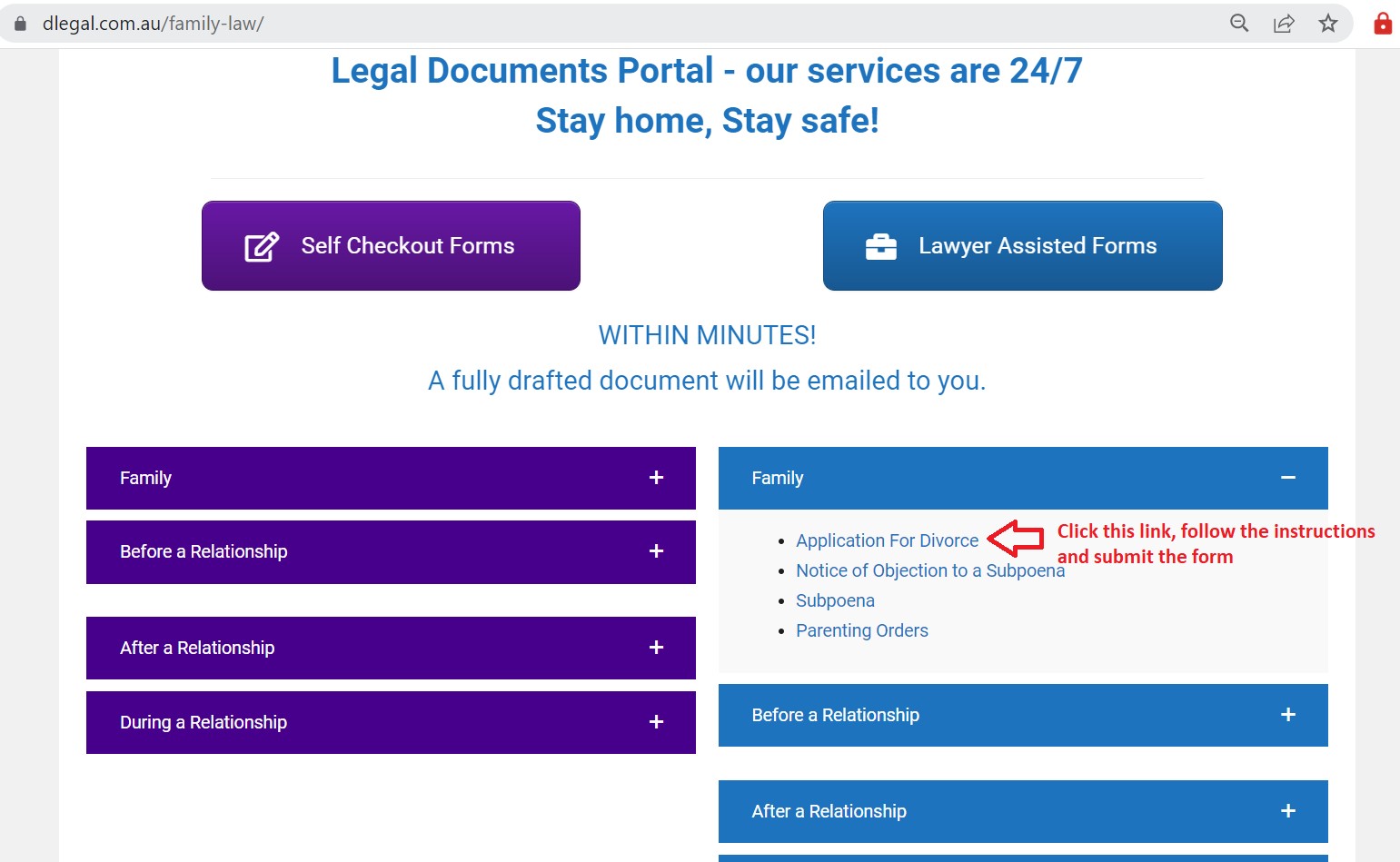In Australia the Family Law Act 1975 established the principle of no-fault divorce in Australian law. This means that a court does not consider why the marriage ended. There is no legal requirement of (who is at) fault in a divorce case.
Under The Family Law Act 1975 only requirement for a divorce is the ‘irretrievable breakdown’ of the marriage. This is proved by both spouses having been separated for 12 months with no likelihood of getting back together. Divorce is the official ending of a marriage. When a divorce order is made final, you can remarry.
Your partner does not have to agree to the separation; however, they need to know that you think the marriage is over.
In Australia you do not have to get a divorce when you separate unless you want to remarry. Staying married affects your rights and obligations in relation to financial matters, wills and estates. Even if you are separated but not divorced your legal spouse/ partner will be eligible to claim from your estate, so you must get legal advice immediately.
The Family Law Act 1975 [Australia]
An Act relating to Marriage and to Divorce and Matrimonial Causes and, in relation thereto and otherwise, Parental Responsibility for Children, and to financial matters arising out of the breakdown of de facto relationships and to certain other Matters.
On this page:
- Legal advice
- When Can I apply?
- Grounds for divorce
- Required Documents Check List
- Online instructions and information link
Legal advice
You should seek specific legal advice before deciding what to do. We can help you understand your legal rights and responsibilities and explain how the law applies to your case.
When Can I apply?
You can apply for a divorce in Australia if either you or your spouse:
- be an Australian citizen or
- live in Australia and consider it your permanent home or
- normally live in Australia and have lived here for at least 12 months before applying for a divorce or and
- have been separated for 12 months
You also need to satisfy the Court that you and your spouse have lived separately and apart for at least 12 months, and there is no reasonable likelihood of resuming married life. It is possible to live together in the same home and still be separated.
Grounds for divorce
The marriage has broken down irretrievably. That is, that there is no reasonable likelihood that you will get back together. You must have been separated for at least 12 months and one day to satisfy the Court that the marriage has broken down irretrievably.
If there are children aged under 18, a court can only grant a divorce if it is satisfied that proper arrangements have been made for them.
If property settlement and/or spousal maintenance issues have not been resolved before the divorce is granted parties must either resolve those matters by obtaining consent orders or signing a Financial Agreement or issue an application for a property settlement and/or spousal maintenance within one year after the divorce takes effect. If you do not, you will have to obtain the leave of the court before filing such an application
Application Fees: are set by Federal Government regulations – Family Law (Fees) Regulations.
Authorised witness
Both parties must sign in front of us or an authorised witness – (authorised witnesses under the Commonwealth Evidence Act 1995.)
If overseas – You can sign in front of a Notary public in China or Australian Consular Officer, or Australian Diplomatic Officer, (within the meaning of the Consular Fees Act 1955) in China.
1 Required Documents Check List
You must provide original or certified documents as noted below when you visit us
1.1 Marriage certificate – You must provide a copy of your marriage certificate.
If your original (i.e., Court does not accept a translation) marriage certificate is not in English, you need to file (we can arrange such for you):
- an English translation of it (only) from a NAATI accredited translator,
- an affidavit from the translator which:
- states his or her qualifications to translate
- attaches a copy of the marriage certificate
- attaches the translated marriage certificate
- states that the translation is an accurate translation of the marriage certificate, and
- states that the attached copy of the marriage certificate is a true copy of the marriage certificate translated.
1.2 Child’s birth certificate (if applicable)
- Evidence that you have lived in Australia or PR/Citizenship grant letter or Passport
- 100 Points of Identification (ID) – information will be sent in a separate email
If you are unable to bring originals to us to certify 100 points of ID should be certified by a verifiable Notary public (must have Notary public, all contact details and verifiable registration details)
2. Online instructions and information link
What you need to do
Go to the link below to provide information via the intake form and submit.
https://dlegal.com.au/family-law/
How to find the intake form from our website:

Legal Documents Portal - our services are 24/7
Stay home, Stay safe!
WITHIN MINUTES!
A fully drafted document will be emailed to you.
